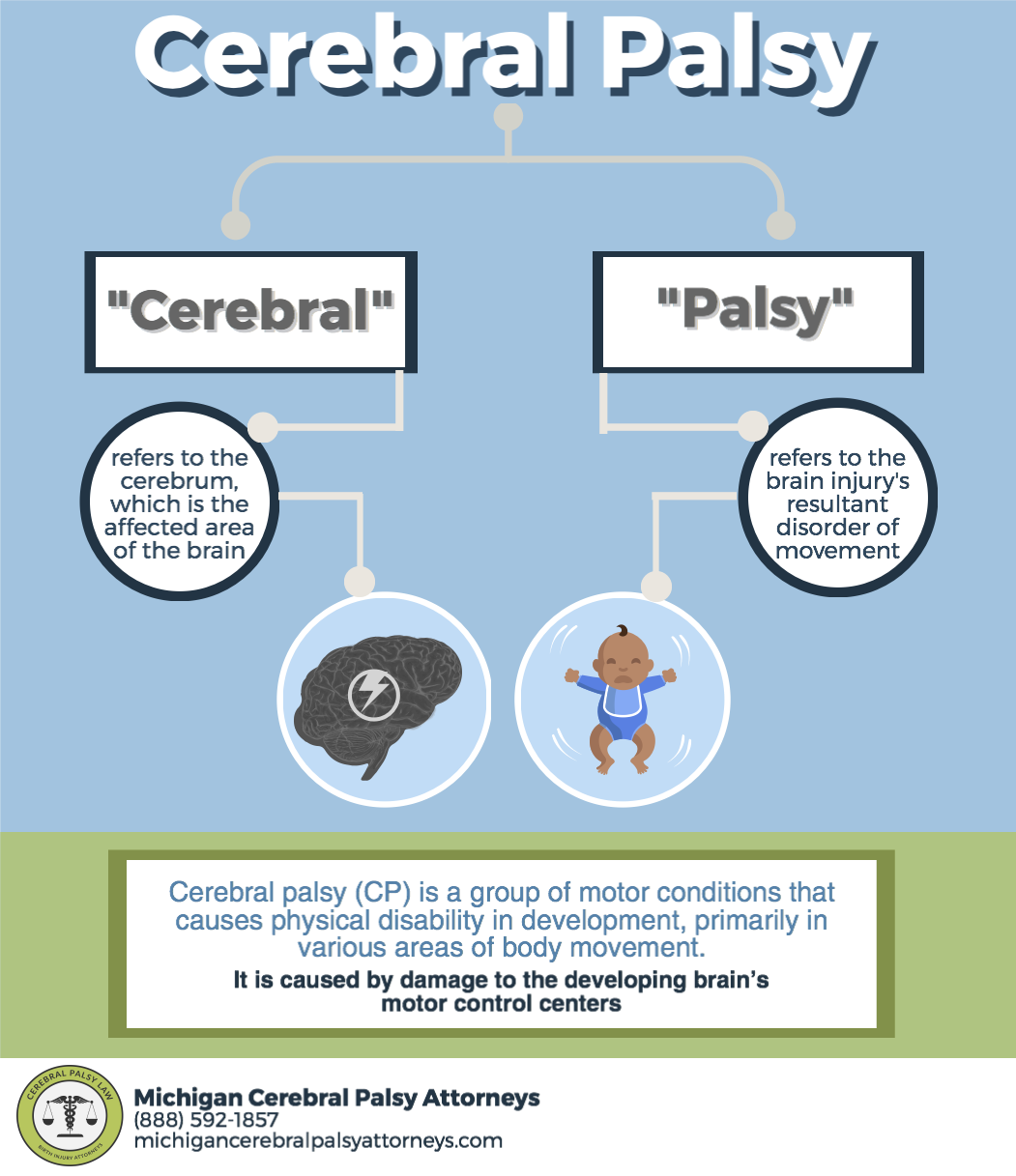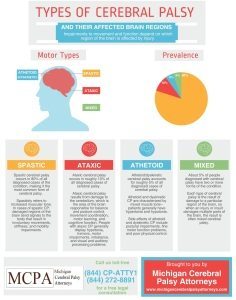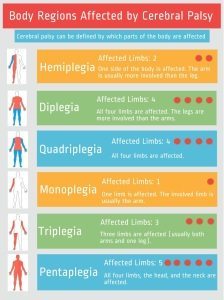What is Cerebral Palsy?
Cerebral palsy (CP) is a term that refers to a group of non-progressive motor conditions often caused by brain damage. These disorders are characterized by a loss or impairment of body movement, reflexes, balance, muscle control, muscle coordination, muscle tone, and posture. This neurological disorder often develops as the result of a brain injury inflicted before, during, or after delivery. Within the term cerebral palsy, “cerebral” refers to the cerebrum, which is the affected area of the brain, and “palsy” refers to any of the resulting movement disorders.
Throughout this section, we will help you become acquainted with everything you need to know about the condition. We’ll cover causes and risk factors, diagnosis, signs, symptoms, treatment and therapy options, resources, and more. If you decided to pursue legal help for your medical malpractice case, we’ll provide you and your family with the resources and information necessary to find the right birth injury attorney.
Breaking Down the Term Cerebral Palsy

What Are the Types of Cerebral Palsy?
Several different classification systems exist to help define and describe the variations of cerebral palsy. The following four classifications of CP reflect different damaged areas of the brain and their corresponding movement impairments:
-
Spastic Cerebral Palsy: The most common form of cerebral palsy, spastic CP, makes up 80% of all cerebral palsy cases. Damaged areas in the central nervous system send responses to the body that often result in muscular tension (hypertonia) and mobility impairments. Other complications of spastic cerebral palsy include muscle spasms, muscular pain or tightness, arthritis, and tendinitis.
- Ataxic CP: Ataxic CP occurs in about 10% of cases and is caused by damage to the cerebellum. The effects of ataxic CP include decreased muscle tone (hypotonia), tremors, motor-function impairment, balance impediments, and visual and/or auditory processing difficulties.
- Athetoid/Dyskinetic CP: Athetoid CP is characterized by mixed muscle tone—the child has both hypertonia (muscular tension) and hypotonia (decreased muscle tone). Athetoid cerebral palsy results from damage to the basal ganglia – the part of the brain responsible for the regulation of voluntary movement. Effects and complications of Athetoid CP include trouble sitting or standing in an upright position, difficulty with fine motor functions (like holding small objects), and difficulty moving hands to a certain spot (for instance, reaching for an object).
- Mixed CP: This is a form of CP in which parts of the spastic, ataxic, or athetoid forms are simultaneously present. It is often found as the result of mixed patterns of brain damage.
The following terms classify CP in terms of affected limbs:
-
Hemiplegia: Hemiplegia is a form of CP in which the arm and leg on one side of the body are affected. It is also known as hemiparesis. Hemiplegia is most commonly associated with spastic CP.
- Diplegia: Diplegia affects limbs on opposite sides of the body (such as both legs). Diplegia is also called diparesis. Diplegia is most commonly the result of spastic cerebral palsy.
- Quadriplegia: Quadriplegia is the form of CP characterized by involvement of all four limbs, it is also called quadriparesis. Quadriplegia is also associated with spastic CP.
- Monoplegia: Monoplegia, or monoparesis, affects one limb (in most cases the arm).
- Triplegia: Triplegia is the form of CP in which three limbs (usually both arms and one leg). It is also called triparesis.
- Pentaplegia: Pentaplegia, or pentaparesis, affects both legs, both arms, the head, and the neck.
While a number of other classification systems for CP exist, these two are the most commonly used.
More About Cerebral Palsy
Below you can find various guides that cover the basics of a cerebral palsy diagnosis.
- Causes and risk factors of cerebral palsy
- Signs and symptoms of cerebral palsy
- Diagnosis of cerebral palsy
- Treatments and therapies for cerebral palsy
Michigan Lawyers Handling Cerebral Palsy Cases
 A diagnosis of cerebral palsy can be devastating to the parents of a newborn, infant or toddler. Since so many questions and uncertainties surround the condition, some people seek help through resources available to the public while others rely on the medical community. Regardless of where a family turns, the key is to be informed.
A diagnosis of cerebral palsy can be devastating to the parents of a newborn, infant or toddler. Since so many questions and uncertainties surround the condition, some people seek help through resources available to the public while others rely on the medical community. Regardless of where a family turns, the key is to be informed.
Throughout this site you’ll find information and resources specifically dedicated to the Michigan families dealing with a CP diagnosis. Our libraries and resource lists are here to help you learn about cerebral palsy, as well as to guide you and your family to the people and places that can help you find medical and financial help.
We encourage you to acquaint yourself with the information regarding CP and reach out for legal help if you believe your loved one’s cerebral palsy resulted from negligence. Contact our experienced and compassionate birth injury lawyers at Michigan Cerebral Palsy Attorneys in any of the following ways:
We handle cases throughout the U.S.
Call our offices toll-free at (888) 592-1857
Press the Live Chat tab to the left
Complete this online contact form
View our Cerebral Palsy Video Library here


